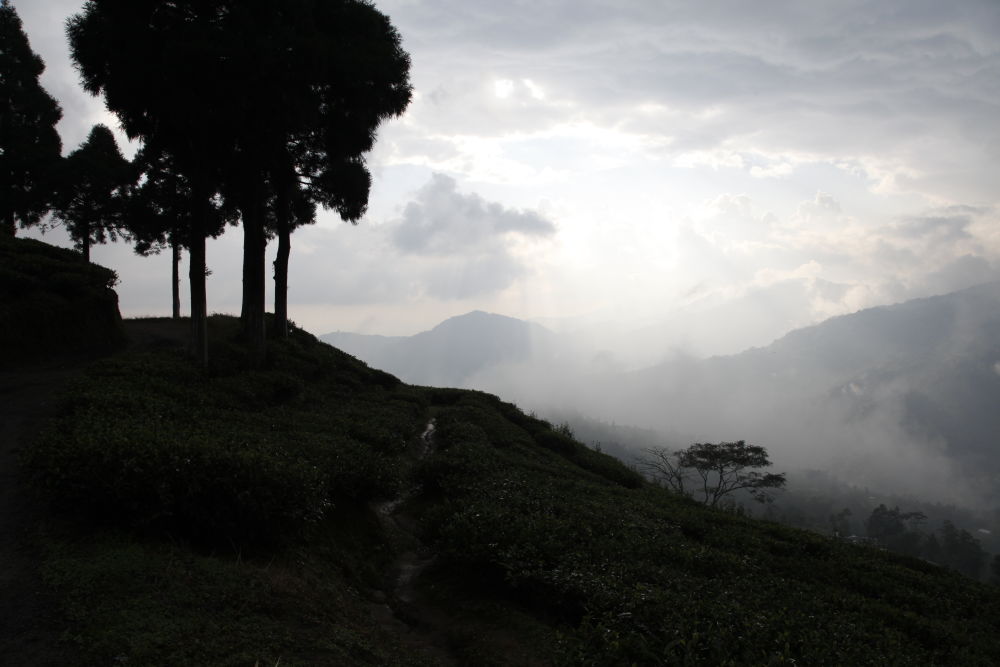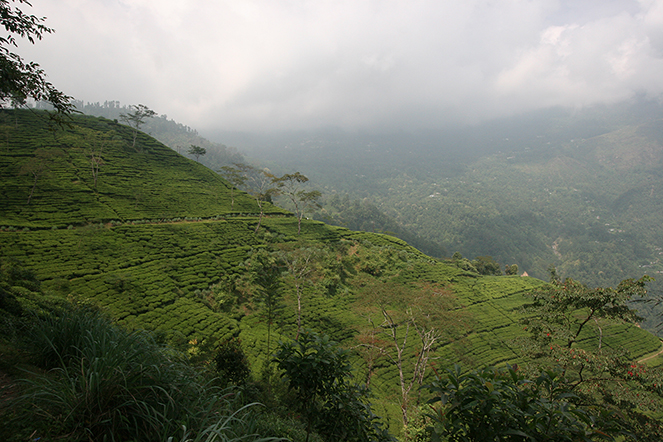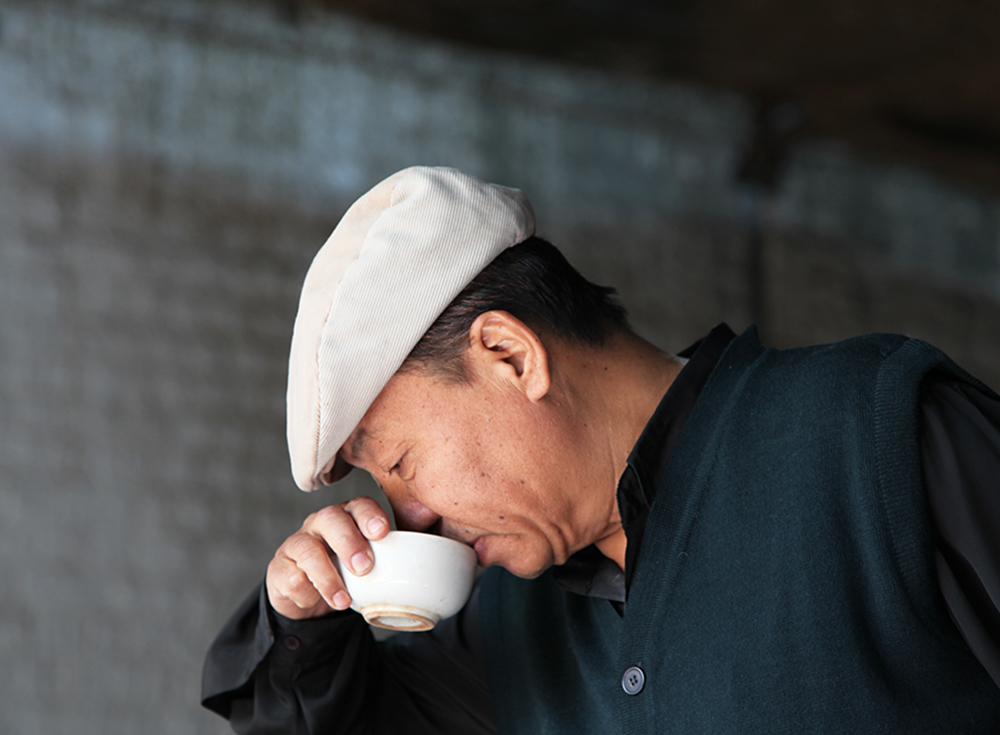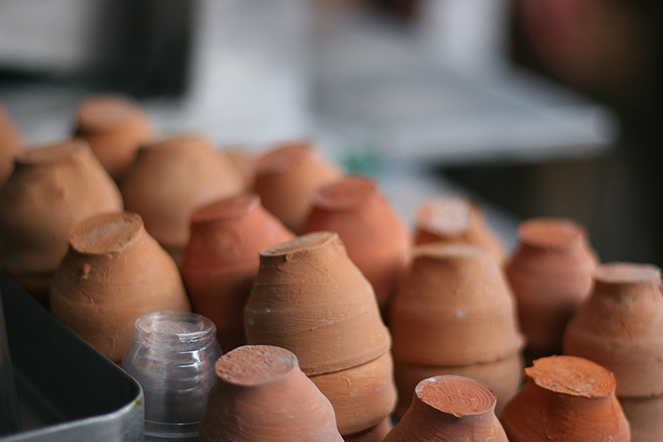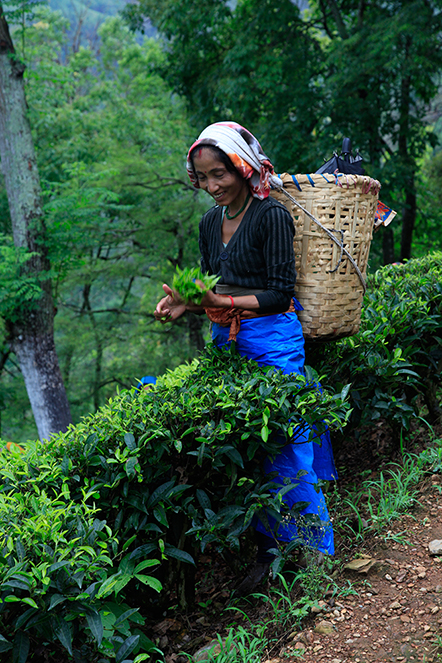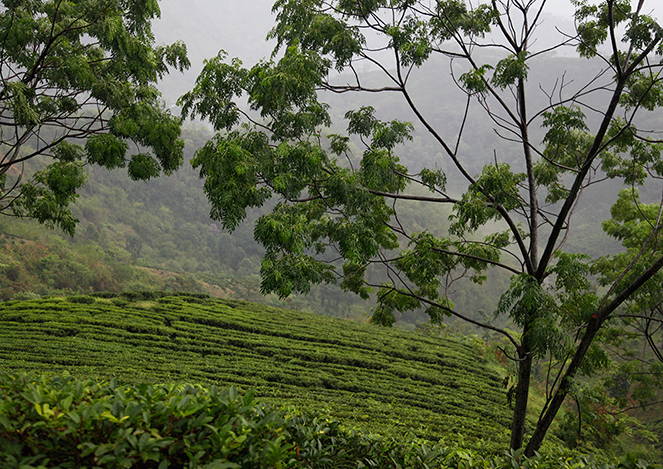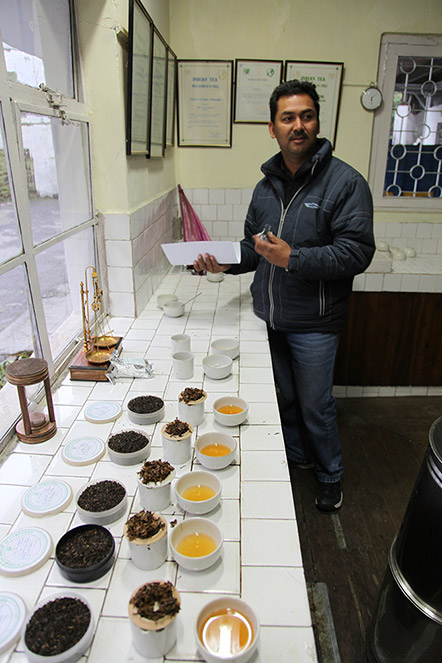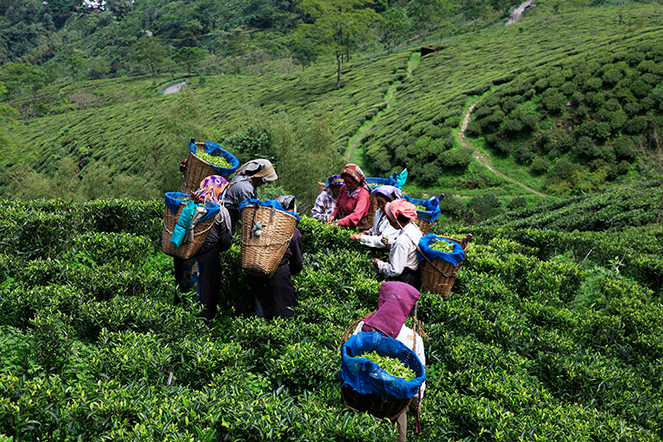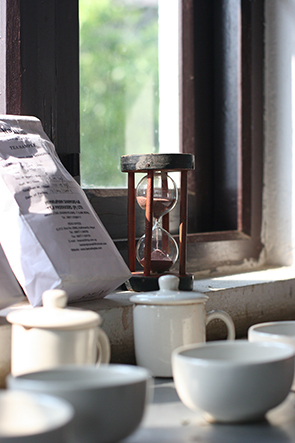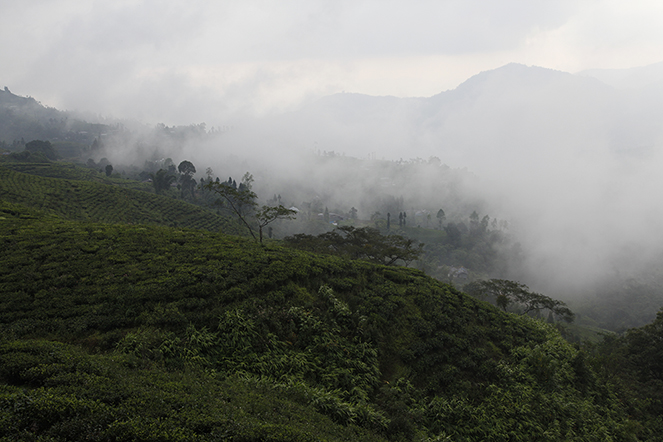In Darjeeling, where I am at the moment, there wasn’t a drop of rain in January or February. This means most plantations haven’t started to harvest yet. Only the ones with plots at low altitudes, who irrigate their plants, have been able to produce a few batches. But here, the first teas are never the best. In Darjeeling, when you’re looking for quality, you can never be in a hurry.
India
Darjeeling: a tea that should not be bought blindly
Around the world, much more Darjeeling tea is sold than is actually produced in Darjeeling. There are also considerable differences between gardens in terms of quality, and considerable differences in quality within the same garden. These differences are due to major variations in weather (a garden might produce excellent teas in April, for example, which is impossible in July during the monsoon) and because the same plantation will have tea plants growing at widely varying altitudes. In Tukvar, for example, 1,000 metres in altitude separates the top of the highest plot and the lowest point on the plantation.
So we must be careful when we buy Darjeeling teas, and we should never rely on the name alone, however prestigious it may be. We should also bear in mind that plantations situated on the plains, of mediocre quality, sit alongside those within the appellation, and human nature being what it is, there is a great temptation to sell Terai teas under the Darjeeling name.
Connoisseurs of first-flush Darjeelings must wait a few more weeks to try the new spring harvest. In this region of the world, tea plants are dormant between November and February, as the soil is too cold for Camellia sinensis.
Tea tasting is all about the senses
When I give a lesson at The Tea School, or when I arrange a tasting for colleagues, one of the first things I do is to ask them a very simple question: once you have put food in your mouth, how many senses are in contact with this food, and which ones? The answers always vary. Now, to taste properly – and this goes for any food – it is essential to understand which senses come into play, and then to build up the appropriate vocabulary.
Unfired clay cups of Kolkata
Superb 2015 new-season teas
Calling all fans of “grand cru” teas! You now have access to the best selection of teas in the world. This is the optimum time of year to try the finest teas in existence. All are extremely fresh, newly delivered by air. There are first-flush and second-flush Darjeelings, new-season Chinese teas, and Japanese Ichibanchas harvested in May, alongside teas from Nepal, Taiwan and South Korea.
For tea-lovers, the start of the summer is a pure pleasure!
An assessment of the 2015 first-flush Darjeelings
When you harvest the terminal bud of the tea plant several times, the stem becomes stressed and stops producing a new bud. This phenomenon of dormancy, known as “banjhi” in Darjeeling, marks the end of the spring harvest (first flush).
If I had to give my assessment of this season in Darjeeling, I’d say we received batches of very varying quality, and few of exceptional quality. But I’ll conclude on a good note, with the choice of a Puttabong Clonal Queen DJ48 and a Margaret’s Hope Tippy Clonal DJ30. The first represents what Puttabong does best; the second is quite simply breathtaking.
Tea is also about people and feelings
Behind each “grand cru”, each tea, there is work, there are people. My work, as I see it, is not limited to tracking down the best teas in the world, it also involves getting to know the people who produce it. Drinking tea with them. Listening to them talk about their product. So when I’m in a Palais des Thés store and I look at that impressive wall of canisters, it’s not the names of the teas on the labels I see, but faces, like that of Vikas Gajmer, manager of Castleton (Darjeeling).
Darjeeling spring harvests
It’s not only the tea plantations that are busy at the moment. Yesterday I received no less than 120 different tea samples to taste. As ever, you need to be quick. If I want to make an offer on one of these batches I must have tasted them all in one or two days at the most. After that, it will be too late.
Of course, I don’t drink all the teas, I spit them out after turning the liquor around in my mouth while I analyse it.
Infusion time for first-flush Darjeelings
First-flush Darjeelings should be infused for between 3:30 and 4 minutes. The easiest way is to set your timer for 3:45. You have to be accurate when preparing this type of tea. If you want to retain a good balance between the aromatic bouquet, texture and flavour, you must stop the infusion in time. What you need is to give the aromas time to develop, while keeping the astringency and bitterness at a delicate level so they prolong the perception of aromas without overpowering them.
les prolongent la perception des parfums, sans leur faire ombrage.
News of the first-flush Darjeelings
The weather can change very quickly in the Himalayan region. The sun might be shining, then in the blink of an eye you could be completely shrouded in a damp mist. This instability, which is very pronounced in Darjeeling, explains why the first teas of the year are sometimes harvested at the end of February, and sometimes in the middle of March.
I’ve just started tasting the first small batches from the new harvest, and for now they are nothing special. The earliest batches are rarely the best; they come from low-altitude plots.

